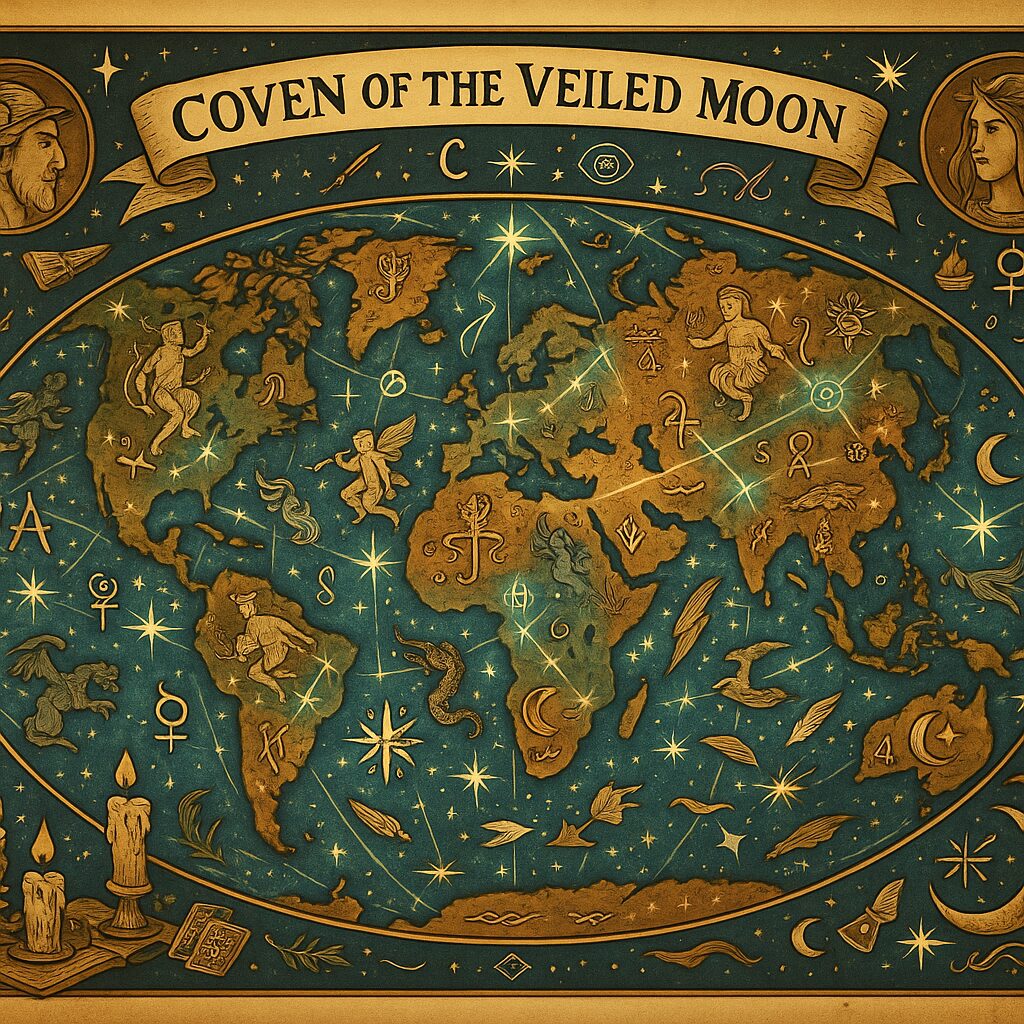Veins of the Earth’s Magic
To those attuned to the unseen, the world is not inert—it pulses, breathes, and hums. Across the surface of the Earth runs a vast web of subtle energetic currents, invisible to the eye but tangible to the spirit. These currents are known as ley lines—or, as some call them, dragon lines, spirit paths, or the world’s songlines. They are the energetic arteries of the planet, through which the power of the Earth flows.
The concept of ley lines, while modern in terminology, reflects ancient beliefs found in diverse cultures. The term “ley line” was coined in 1921 by Alfred Watkins, a British antiquarian, who observed that ancient sites—stone circles, mounds, churches, wells—often aligned in straight paths across the landscape.
But for practitioners of neo-pagan spirituality, these alignments were never just roads—they were conduits of sacred power. In China, the concept of “lung mei” (dragon veins) informed the placement of temples and tombs. In the Andes, the ceques radiated from the Temple of the Sun like energetic spokes. Aboriginal songlines trace the dreaming paths of the ancestors. And in the British Isles, lines between stone circles, hillforts, and burial mounds speak of ancient peoples who felt the current beneath their feet.
Whether these lines were used for navigation, ritual, or resonance, they testify to an intuitive human knowing—that the Earth is alive, and that certain places thrum louder than others.
Ley lines are not simply theoretical—they are energetically experiential. Many witches, druids, and spirit-workers report that standing on or near a ley line can heighten one’s magical perception, increase psychic sensitivity, and accelerate spellwork. Temples, groves, and sacred circles located on ley crossings—called “nodes” or “power points”—become natural amplifiers, ideal for ritual, scrying, and communion with spirits or deities.
Witches and ritualists may use ley lines in the following ways:
- Ritual Site Selection: Performing rites at a known ley crossing or node strengthens magical focus and flow.
- Energetic Charging: Tools and talismans can be left to “sleep” upon a ley line to absorb ambient energy.
- Spirit Communication: Certain intersections are thin places—veil-weakened locations where ancestral or elemental communication is easier.
- Pathworking & Journeying: Astral or shamanic travel can be anchored to a ley line, allowing clearer entry and return.
- Geomantic Healing: Practitioners of Earth magic may sense disturbances in the lay, performing rituals to cleanse or realign broken energy flows.
Some advanced workers, like in our tradition, are able to “read the lay” like one reads the wind—feeling where it bends, twists, pools, or fractures. This ability enables magical artisans to craft tools that hold or channel this energy and perform rites that weave with the land, not against it.
Ley lines are not theoretical curiosities—they are part of a living relationship with the Earth. Walking a ley is like walking a memory, and working magic upon one is like raising your voice in the world’s old chorus. These lines are not owned. They are known. They are felt. They are respected.
To live magically is to remember that power does not always rise from the sky—it rises from the soil, from stone, from root and spring. The ley is a reminder that magic is not made in isolation, but in communion with the Earth’s dreaming self.

